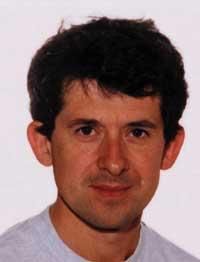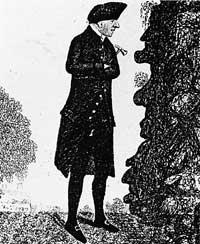Earth Sciences: Key to the Future in the Past
1997/03/01 Elhuyar Zientzia Iturria: Elhuyar aldizkaria
Earth scientists often ask us why we investigate the rocks and their contents and, together with the consultation, ask us to explain the correct applications of our research. The truth is that aside from the exploitation of oil and minerals, most people do not realize the importance of the Earth Sciences, since to some extent scientists, in general, give little explanation.
“The present is the key of the past,” says one of the fundamental principles of Geology. In this way, it is assumed that the processes that operate today have also acted in the past, that is, that the influence of these processes has not only occurred at present, but also in the past. The application of this principle allows us to explain the nature of the formation of rocks and, therefore, serves to understand the why of its characteristics. Although the philosophy of the principle is a graduate, catastrophic philosophies predominate at birth and, to a large extent, conditioned by religion. Thus, the Bible often uses catastrophic events, such as the Universal Flood, to teach lessons of human history. This biblical vision has permeated for centuries the thought of modern Western civilization; hence it can be understood that the scientist tries to explain our physical and biological environment through this thought.
For example, conditioned by the biblical perspective, the history of the Earth was measured for thousands of years until the time of Darwin. Therefore, any geological process had a very short time frame to act and, consequently, the geological phenomenon had to happen very quickly to produce the “results” that were seen later, as the formation of mountains. Therefore, to explain the physical medium, the catastrophic hypotheses were mainly used. Until the nineteenth century, many processes are extremely slow and technology has had to go ahead for the first time to know or demonstrate its existence. Thus it happened, for example, with the theory of the “Drift of the Continents”, which until the 1960s had a very small extension.
But XIX. In the eighteenth century the age of the Earth began to prolong to be able to verify the data possessed by scientists, coming to think that by the end of the century it was millions of years. Today, with the exception of creationists, most scientists recognize that the age of our planet is close to 4,500 million years. Well XIX. Until the twentieth century the pendulum was mainly on the side of catastrophism, but from then on the pendulum gradually passed towards gradualism. This gradualist vision, however, cannot explain everything and, therefore, admits catastrophic phenomena, but exceptionally.

However, exceptions are gaining strength in recent years. The time that humans have consciously observed and written is very short, as it barely reaches 0.0001% of Earth's history. If we compare the history of the Earth with a calendar year, modern civilizations have barely observed half a minute of the last Old Year, and scientists of recent centuries have barely passed from three to four seconds. Therefore, the principle of “Present” implies, at least in part, that what happens at the end of a year in three or four seconds can explain the whole year.
In any case, it is clear that this can be valid as extrapolation and working hypothesis, but it should also be evident that it is limited for researchers. For this reason, the explanation of everything through the processes that are being carried out today is impossible, and there are still mysteries related to the Earth Sciences, such as the mass extinctions of beings. This shows that some phenomena and mechanisms that have occurred are never taking place now.
Or that, although they are produced today, they have previously occurred with different speeds and intensities. But, of course, they can happen again and be very important phenomena for living beings, they can deeply influence our society. Therefore, to predict the future, we need to know the past. This derives a new principle that could be expressed as “The past as a key to the future.” The use of this principle would give us the ability to be prepared before the phenomena that can be produced and can be useful for the survival of our own species. In this is the importance of the Earth Sciences, which help society to read the past.

Gai honi buruzko eduki gehiago
Elhuyarrek garatutako teknologia





